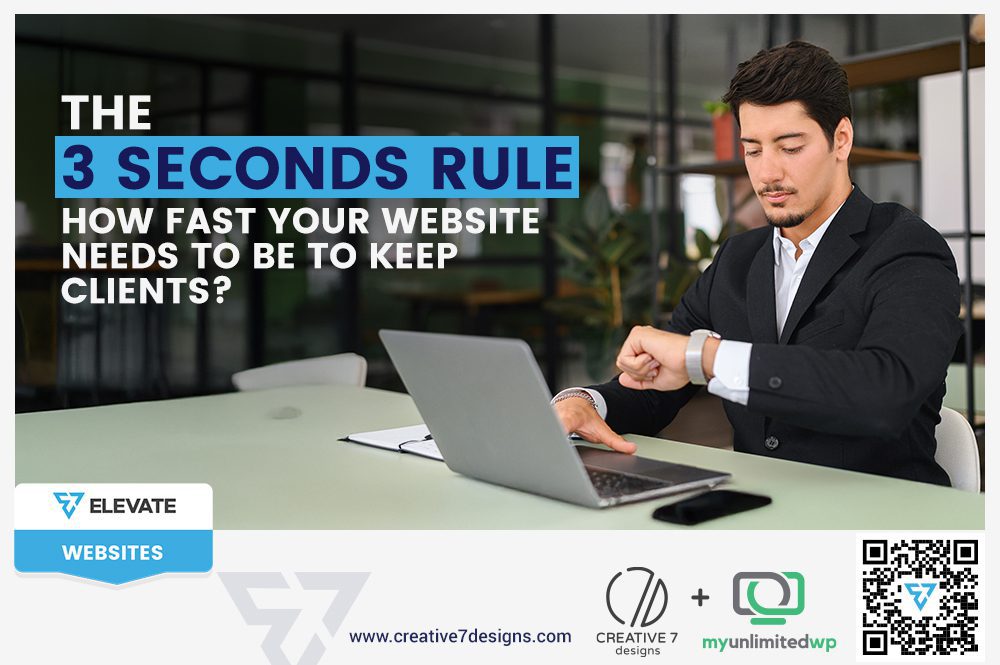Overview: Is your website fast enough to keep clients? Studies show users leave if a page takes over 3 seconds to load. Discover why speed matters for SEO, conversions, and business success — plus expert tips to optimize your site today!
According to a BBC report, nearly half of online visitors expect a website to load within 3 seconds, and the rest will only wait up to 8 seconds before moving on. If your site doesn’t load fast enough, you’re losing potential customers to competitors.
This shift in user behavior reflects an increasing demand for immediacy. A decade ago, users were more patient, tolerating load times of up to 10 seconds. Now, speed is a critical factor in retaining visitors and driving conversions.
The Cost of Slow Load Times
Even a fraction of a second can impact revenue. For instance, fashion retailer Nordstrom experienced an 11% drop in sales due to a mere 0.5-second increase in load time — amounting to tens of millions in lost revenue. Speed isn’t just about user experience; it directly affects profitability.
Why Are Users Less Patient?
Several factors contribute to users’ growing demand for instant access:
Faster Connectivity – High-speed fiber-optic internet, 4G, and even 5G connections reduce latency, setting higher expectations for loading times.
Increased Device Availability – With mobile devices, smart home technology, and wearables, content needs to be accessible instantly, anytime, anywhere.
Advancements in Browsers – Modern browsers like Google Chrome optimize rendering speed, making slow-loading sites stand out as frustrating exceptions.
Content Delivery Networks (CDNs) – These systems distribute website content across global servers, increasing speed and reinforcing the expectation of instant access.
Cultural Shift – The rise of instant streaming services like Netflix and Spotify has conditioned users to expect immediate results, making delays even less acceptable.
How to Improve Website Load Speed
To keep up with today’s impatient online audience, businesses must optimize their websites. Here are some effective ways to do it:
Improve Perceived Load Speed : User perception plays a big role in how fast a website feels. Use these psychological techniques to enhance perceived speed:
Progressive Image Loading – Display images in a low-resolution format first, refining them as the page loads.
Prioritized Content Loading – Load essential content first so users can interact with the page while background elements load.
Immediate Feedback – Use hover effects, loading bars, and animations to show progress, making the wait feel shorter.
Optimize Code & Scripts
-
Minify CSS & JavaScript – Remove unnecessary code to improve loading efficiency.
-
Avoid Render-Blocking Scripts – Ensure scripts don’t delay page rendering.
Optimize Images
-
Use Proper Image Scaling – Upload images in the correct dimensions instead of relying on CSS scaling.
-
Compress Images – Reduce file size without losing quality to improve load times.
Reduce HTTP Requests : Each element on your page (images, scripts, stylesheets) requires an HTTP request. Minimizing these requests speeds up load times.
Use a Content Delivery Network (CDN) : A CDN distributes your website’s assets across global servers, ensuring fast access for visitors regardless of their location.
Fix 404 Errors : 404 errors consume server resources. Regularly check for broken links and outdated assets to maintain optimal performance.
Implement Caching :
-
Browser Caching – Allows returning visitors to load stored elements instead of re-downloading them.
-
Server Caching – Stores frequently accessed data to reduce server response times.
In Summary
As user attention spans continue to shrink, optimizing your website’s speed is more important than ever. A fast-loading site enhances user experience, reduces bounce rates, and increases conversions. Prioritizing performance isn’t just a technical requirement — it’s a business necessity.
By implementing these strategies, businesses can meet the expectations of modern consumers and stay ahead in the digital marketplace.


